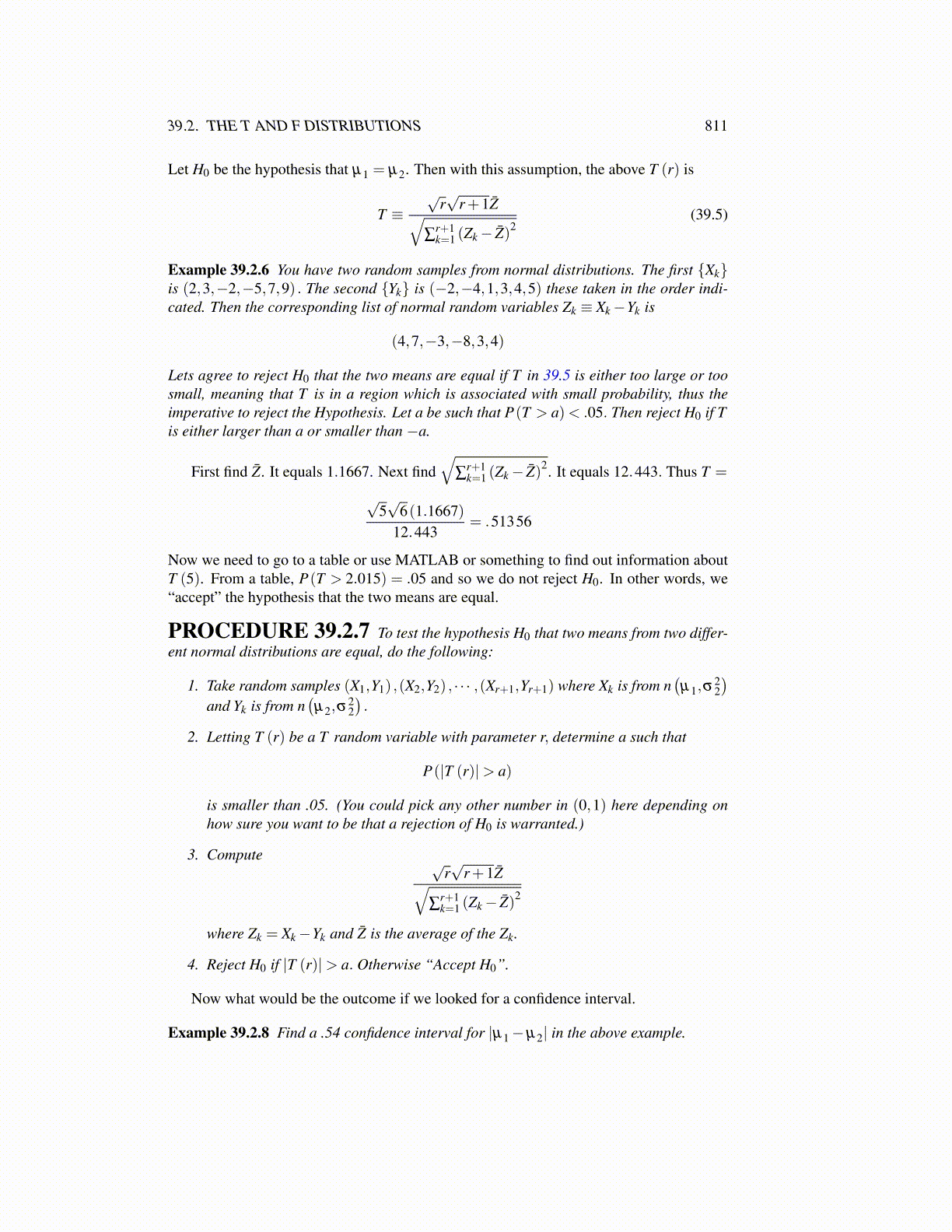
39.2. THE T AND F DISTRIBUTIONS 811
Let H0 be the hypothesis that µ1 = µ2. Then with this assumption, the above T (r) is
T ≡√
r√
r+1Z̄√∑
r+1k=1 (Zk− Z̄)2
(39.5)
Example 39.2.6 You have two random samples from normal distributions. The first {Xk}is (2,3,−2,−5,7,9) . The second {Yk} is (−2,−4,1,3,4,5) these taken in the order indi-cated. Then the corresponding list of normal random variables Zk ≡ Xk−Yk is
(4,7,−3,−8,3,4)
Lets agree to reject H0 that the two means are equal if T in 39.5 is either too large or toosmall, meaning that T is in a region which is associated with small probability, thus theimperative to reject the Hypothesis. Let a be such that P(T > a)< .05. Then reject H0 if Tis either larger than a or smaller than −a.
First find Z̄. It equals 1.1667. Next find√
∑r+1k=1 (Zk− Z̄)2. It equals 12.443. Thus T =
√5√
6(1.1667)12.443
= .51356
Now we need to go to a table or use MATLAB or something to find out information aboutT (5). From a table, P(T > 2.015) = .05 and so we do not reject H0. In other words, we“accept” the hypothesis that the two means are equal.
PROCEDURE 39.2.7 To test the hypothesis H0 that two means from two differ-ent normal distributions are equal, do the following:
1. Take random samples (X1,Y1) ,(X2,Y2) , · · · ,(Xr+1,Yr+1) where Xk is from n(µ1,σ
22)
and Yk is from n(µ2,σ
22).
2. Letting T (r) be a T random variable with parameter r, determine a such that
P(|T (r)|> a)
is smaller than .05. (You could pick any other number in (0,1) here depending onhow sure you want to be that a rejection of H0 is warranted.)
3. Compute √r√
r+1Z̄√∑
r+1k=1 (Zk− Z̄)2
where Zk = Xk−Yk and Z̄ is the average of the Zk.
4. Reject H0 if |T (r)|> a. Otherwise “Accept H0”.
Now what would be the outcome if we looked for a confidence interval.
Example 39.2.8 Find a .54 confidence interval for |µ1−µ2| in the above example.